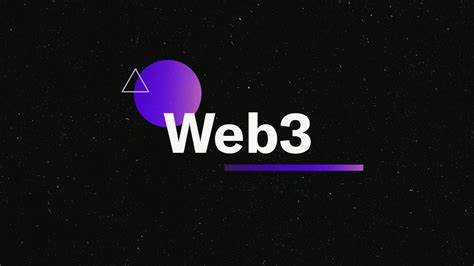The internet has come a long way since its inception, evolving from static web pages (Web1) to the dynamic, user-driven platforms we see today (Web2).
Now, a new era is emerging: Web3. This next-generation internet promises to revolutionize how we interact online, putting control back into the hands of users through decentralization and blockchain technology.
In this article, we will explore How Web3 Is Revolutionizing the Internet, what Web3 is, how it works, and its potential to reshape the internet as we know it.
What Is Web3?
Web3, also known as the decentralized web, is the third generation of the internet. Unlike Web2, which relies on centralized platforms like Google and Facebook, Web3 is built on blockchain technology, making it decentralized and user-centric.
In Web3, users own their data and have greater control over how it is shared and used. Smart contracts, self-executing agreements coded into blockchain networks, enable trustless interactions, eliminating the need for intermediaries.
Key features of Web3 include:
• Decentralization: No single entity controls the network.
• Transparency: All transactions are recorded on public ledgers.
• User ownership: Individuals retain control over their digital identities and assets.
How Does Web3 Work?
Web3 operates on blockchain technology, which is a decentralized ledger system. Here’s how it works:
• Blockchain Infrastructure: Web3 applications, known as dApps (decentralized applications), run on blockchain networks like Ethereum, Solana, or Polkadot.
Cryptocurrencies: Digital currencies power Web3, enabling peer-to-peer transactions and incentivizing network participation.
• Smart Contracts: These automated programs execute agreements when predefined conditions are met, removing the need for middlemen.
• Decentralized Storage: Instead of relying on centralized servers, Web3 uses decentralized storage solutions like IPFS (InterPlanetary File System). By leveraging these technologies, Web3 creates a more secure, transparent, and equitable internet.
The Benefits of Web3
Web3 offers several advantages over the current internet model:
1. Enhanced Privacy and Security
In Web3, users own their data and can decide who has access to it. This reduces the risk of data breaches and misuse by centralized entities.
2. Decentralized Control
Unlike Web2 platforms, which are controlled by corporations, Web3 is community-driven. This ensures a fairer distribution of power and decision-making.
3. Financial Inclusion
Web3 enables anyone with an internet connection to participate in the global economy through cryptocurrencies and decentralized finance (DeFi).
4. New Opportunities
Web3 opens doors to innovative use cases, such as NFTs (non-fungible tokens) for digital ownership, play-to-earn gaming models, and decentralized autonomous organizations (DAOs) for collective decision-making.
Challenges Facing Web3
Despite its potential, Web3 faces several challenges:
1. Scalability Issues
Blockchain networks can struggle to handle large transaction volumes, leading to delays and high fees.
2. Complexity
The technical nature of Web3 can be intimidating for newcomers, limiting widespread adoption.
3. Regulatory Uncertainty
Governments around the world are still figuring out how to regulate Web3 technologies, which could impact their growth.
4. Environmental Concerns
Some blockchain networks consume significant energy, raising concerns about sustainability. Addressing these challenges will be critical for Web3 to reach its full potential.
Real-World Applications of Web3
Web3 is already making an impact across various industries.
1. Decentralized Finance (DeFi)
DeFi platforms like Uniswap and Aave allow users to trade, lend, and borrow assets without intermediaries, democratizing access to financial services.
2. NFTs and Digital Art
NFTs have revolutionized digital ownership, enabling artists to sell unique digital creations directly to collectors.
3. Gaming
Web3 gaming platforms like Axie Infinity use blockchain to enable play-to-earn models, where players can earn real-world value.
4. Decentralized Social Media
Platforms like Lens Protocol and Mastodon are challenging traditional social networks by giving users control over their data and content.
The Future of Web3
Web3 is still in its early stages, but its potential to transform the internet is undeniable. As blockchain technology matures and adoption increases, we can expect to see a more decentralized, user-centric online ecosystem.
While challenges remain, the promise of Web3 lies in its ability to empower individuals, foster innovation, and create a more equitable digital world. For users, businesses, and developers, understanding Web3 is essential to staying ahead in this rapidly evolving landscape.
Conclusion
Web3 is more than just a buzzword; it represents a transformative vision for the future of the internet, one that is decentralized, inclusive, and empowering. Unlike the current internet model dominated by centralized platforms, Web3 seeks to put control back into the hands of individuals. It envisions a digital ecosystem where users have ownership of their data, greater privacy, and the ability to participate directly in online interactions without relying on intermediaries.
At its core, Web3 is built on blockchain technology, which ensures transparency, security, and trust. Web3 also has the potential to bridge gaps in global connectivity, enabling financial inclusion and access to digital tools for underserved communities.
By understanding the principles and potential of Web3, you are not just a passive observer of technological change; you become an active participant in shaping a fairer, more equitable internet.
Whether you’re a developer, investor, entrepreneur, or everyday user, embracing Web3 means contributing to a digital future that prioritizes empowerment, innovation, and collaboration over control and centralization. This exciting digital revolution is still in its early stages, and there’s no better time than now to get involved and help shape the future of the internet.
FAQs
1. What is Web3 in simple terms?
Web3 is the next generation of the internet, built on blockchain technology. It emphasizes decentralization, user ownership of data, and trustless interactions without intermediaries.
2. How is Web3 different from Web2?
Web2 relies on centralized platforms, while Web3 is decentralized and user-driven. In Web3, users own their data and interact directly through blockchain-based systems.
3. What are some examples of Web3 applications?
Examples include decentralized finance (DeFi) platforms like Uniswap, NFT marketplaces like OpenSea, and blockchain-based games like Axie Infinity.
4. Is Web3 the future of the internet?
Many experts believe Web3 has the potential to reshape the internet by prioritizing decentralization, privacy, and user empowerment. However, its widespread adoption will depend on overcoming current challenges.
5. How can I get started with Web3?
To get started, explore blockchain wallets like MetaMask, try using decentralized apps (dApps), and learn about cryptocurrencies and smart contracts.




